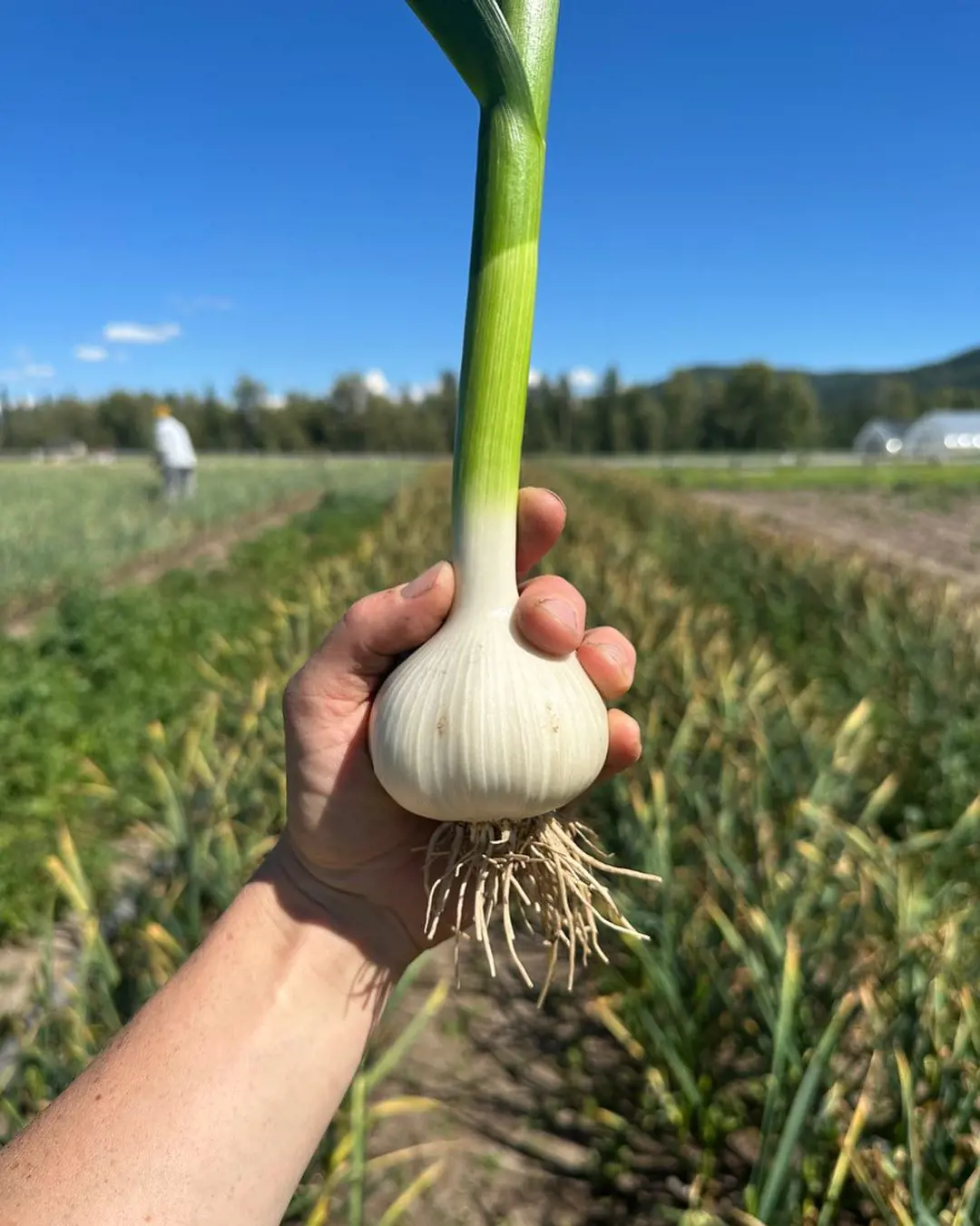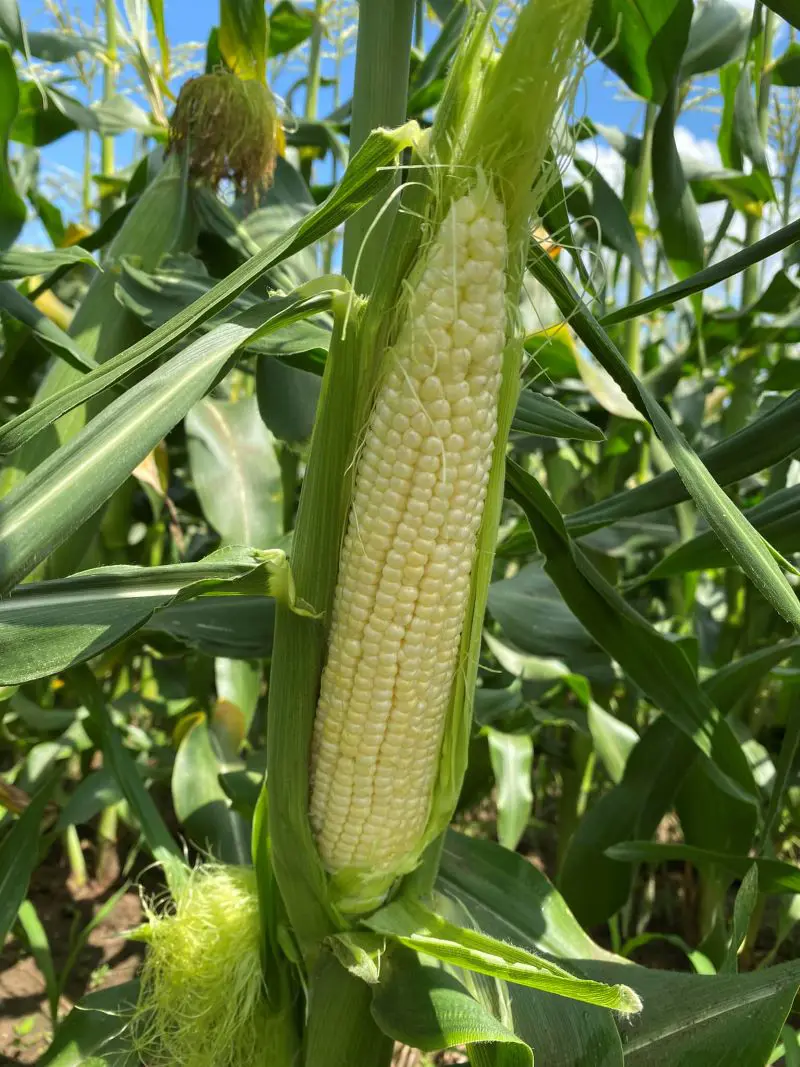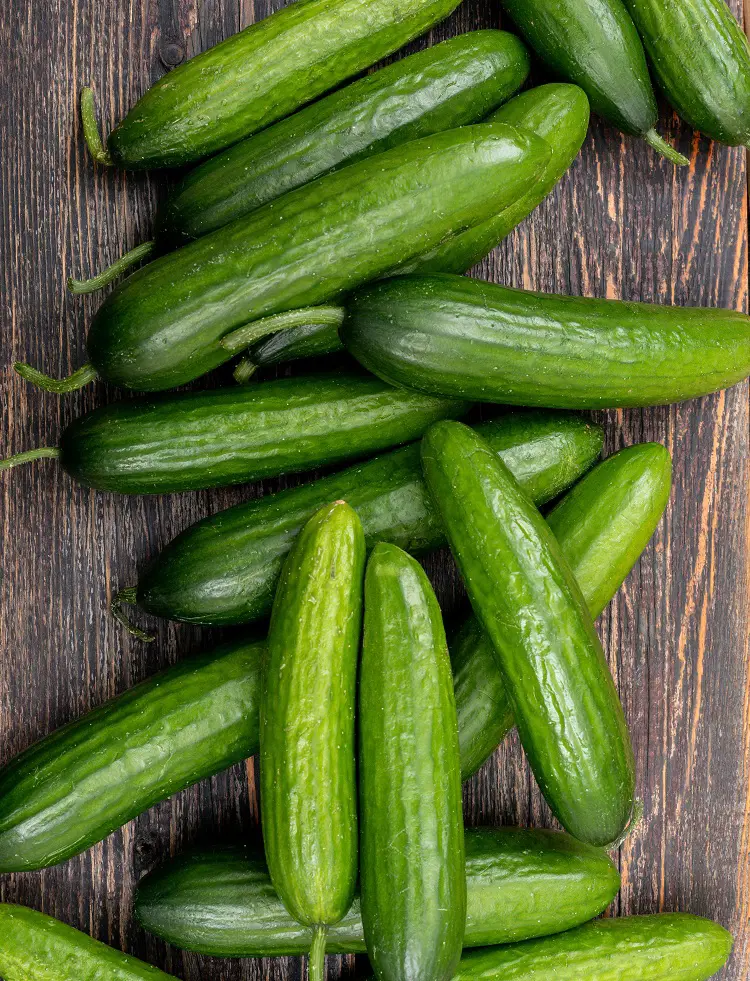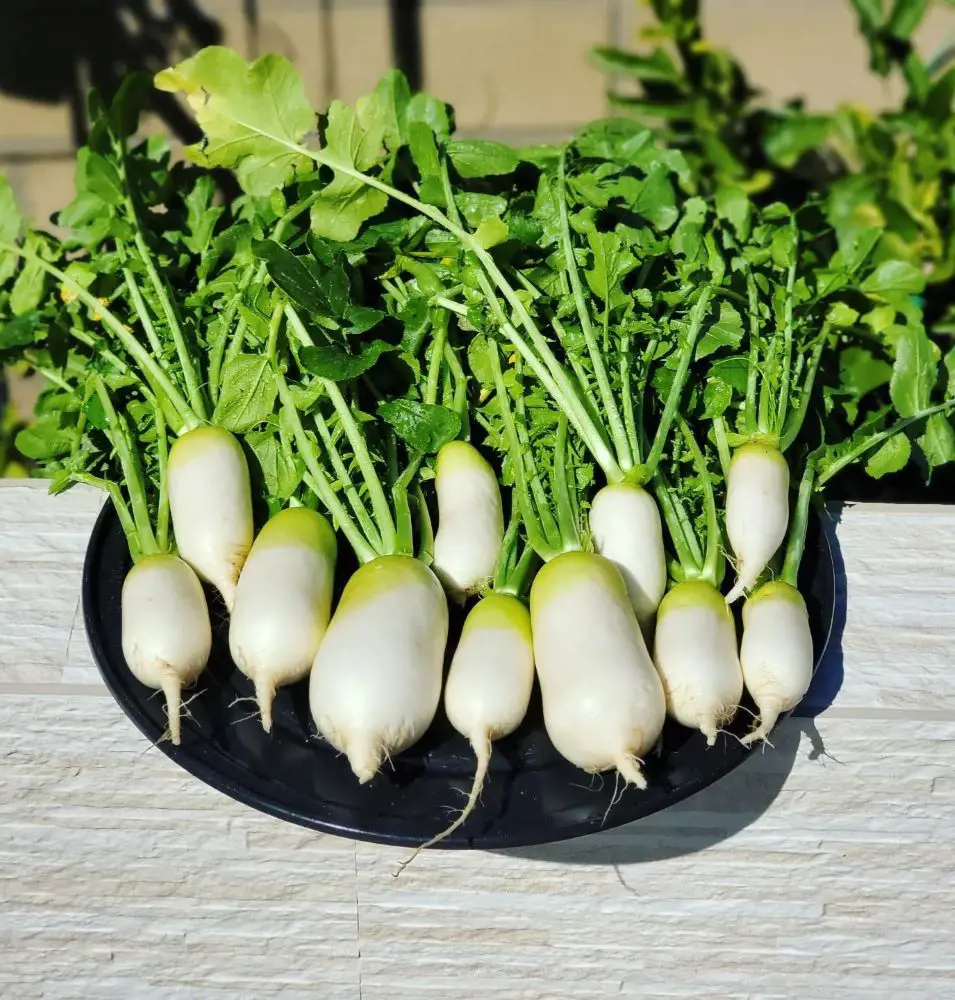How To Grow Pineapple Starting From Basics
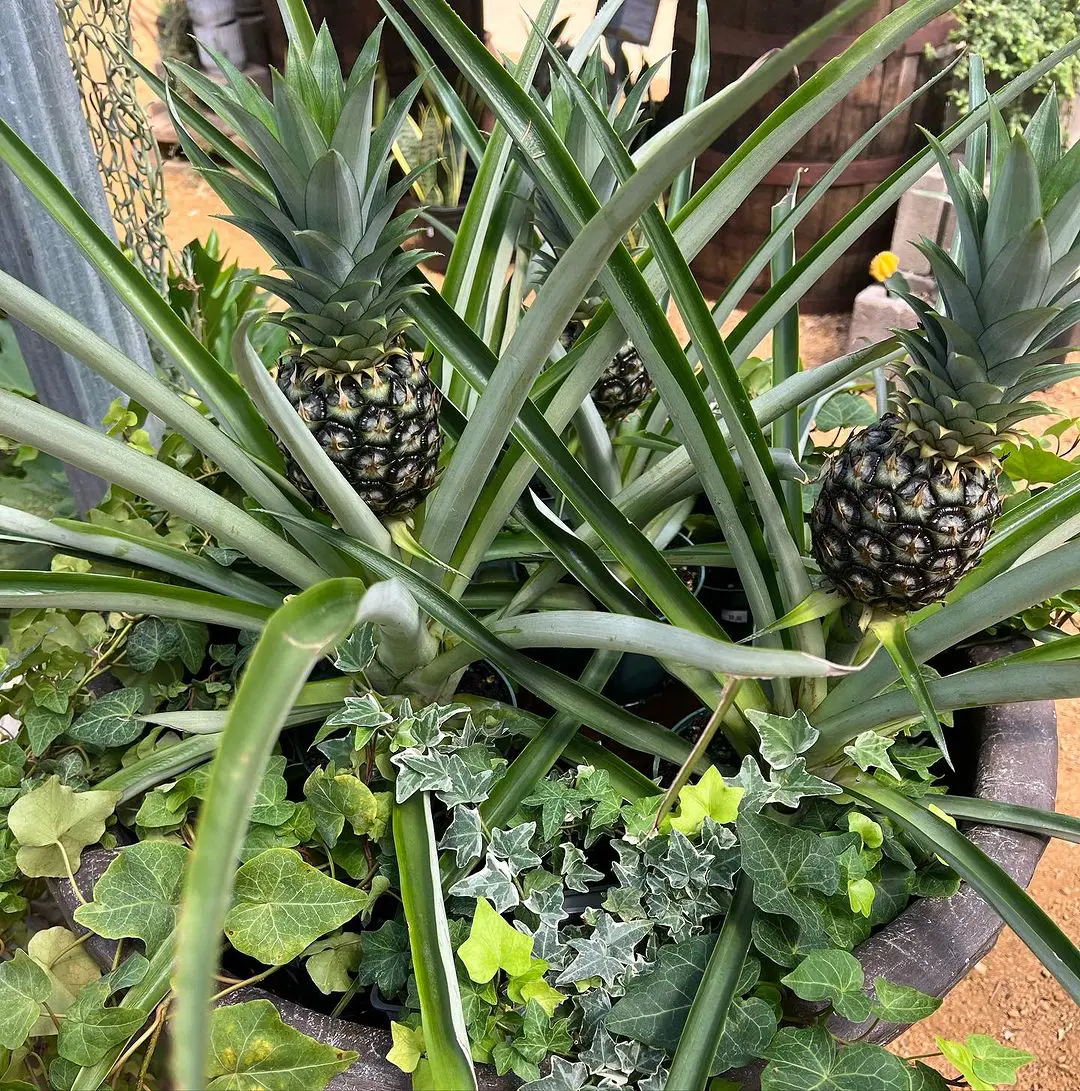
This post may contain affiliate links. If you make a purchase through links on our site, we may earn a commission.
Embarking on the journey of growing your own pineapple is not just a horticultural endeavor; it's a delightful voyage from kitchen to garden.
Picture transforming a store-bought pineapple crown, seemingly destined for the compost bin, into a thriving tropical plant that eventually yields succulent, homegrown pineapples.
In this guide, we'll unravel the secrets and joys of cultivating pineapples, starting from the basics. So, grab your gardening gloves, and let's dive into the rewarding world of pineapple cultivation.
How To Plant Pineapple?
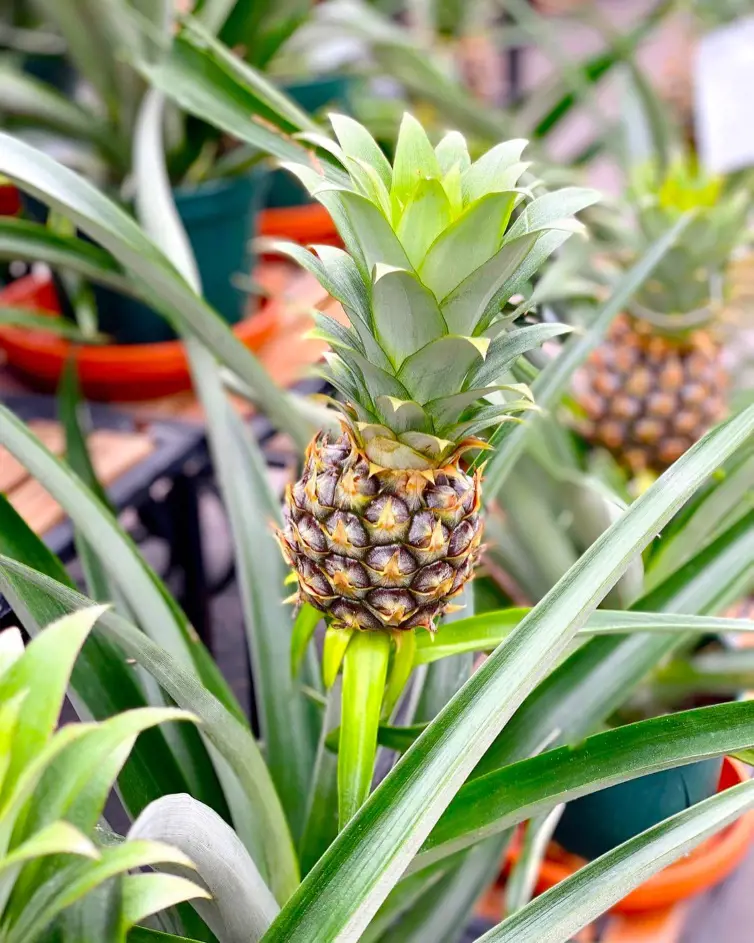
Planting a pineapple can be a fun and rewarding experience, and there are a few different ways to go about it. Each method has its own advantages and disadvantages, so the best choice for you will depend on your preferences and growing conditions.
Here are the main options:
Planting from the crown:

This is the most common and popular method. It involves simply twisting off the leafy top (crown) of a store-bought pineapple, preparing it by removing some leaves and drying the stem, and then planting it in well-draining soil.
- Advantages: Easy to do, readily available starting material, relatively fast growth.
- Disadvantages: May take longer to mature than other methods, and the fruit size might be smaller.
Planting from slips:

Slips are small plantlets that sometimes grow at the base of the pineapple crown. They can be separated and planted on their own.
- Advantages: Can produce larger fruit than crown plantings, often more plentiful.
- Disadvantages: Takes longer to mature than crown plantings, and it is harder to find reliable starting material.
Planting from seeds:

While possible, this method is not recommended for beginners. It takes much longer to mature, requires specific conditions, and is not guaranteed to produce fruit.
-
Disadvantages: Extremely slow growth
Planting from suckers:
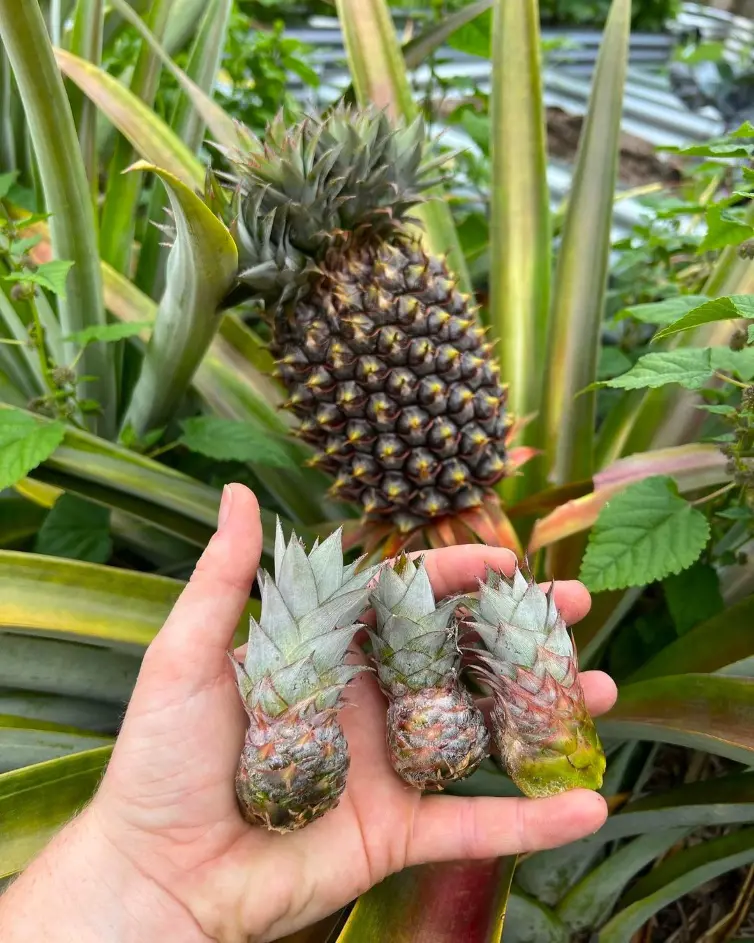
Suckers are larger plantlets that grow from the base of the main plant. They are less common than slips but they can be used for planting.
- Advantages: Largest fruit potential; faster growth than slips.
- Disadvantages: Very rare to find as a starting material; requires an existing pineapple plant.
Now, let us explore the steps to growing pineapple, starting with the basics.
Growing Pineapple from Pineapple
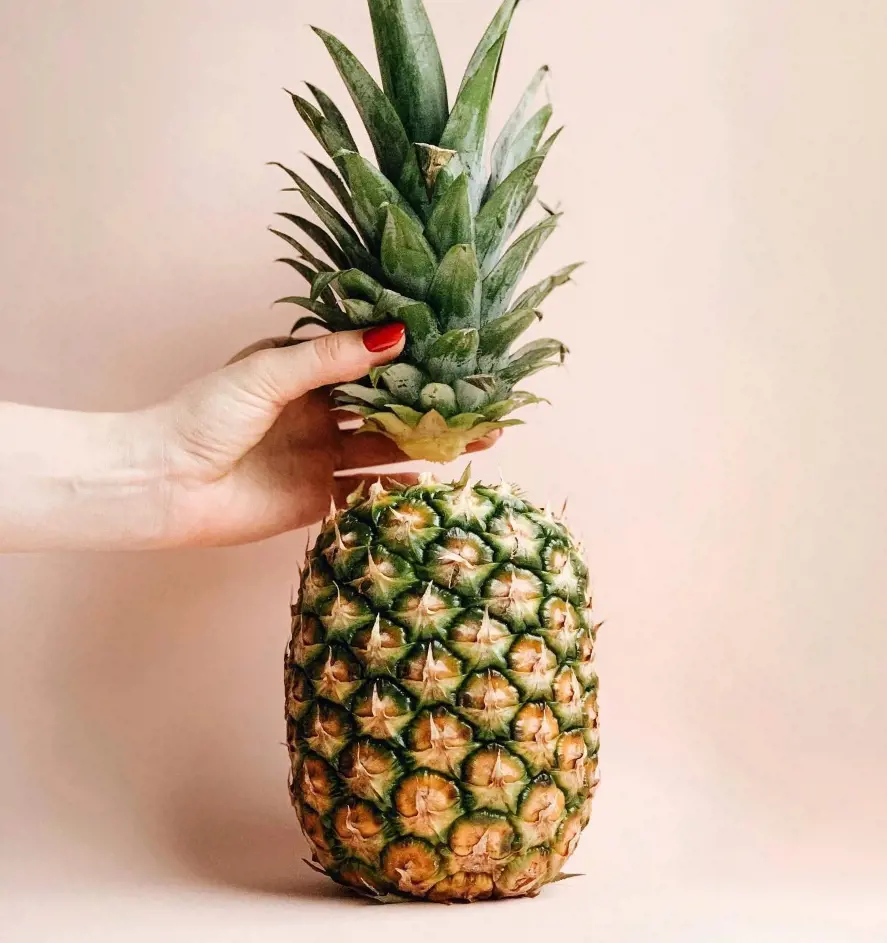
Growing pineapple from a pineapple, or, more accurately, its crown, is a fun and surprisingly easy way to cultivate this tropical fruit at home. You simply twist off the leafy top of a ripe pineapple, prepare it by removing some lower leaves, and plant it in well-draining soil.
With regular watering, sunlight, and patience (it takes about 18-24 months), you'll be rewarded with a homegrown pineapple. It's like having a mini-tropical paradise on your windowsill, all thanks to a simple twist and turn
Here are the following steps for growing pineapple from a pineapple top or crown:
Choose your Pineapple
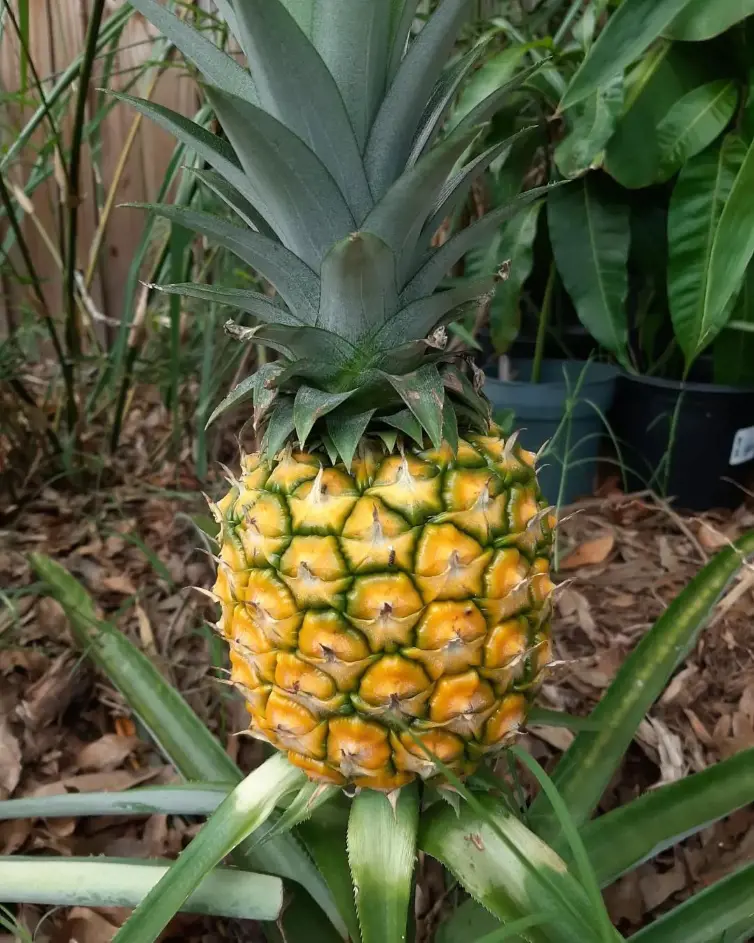
When choosing a pineapple, look for one that is fresh and healthy. Opt for a pineapple with vibrant green leaves and a firm, unblemished skin. Avoid those with wilting or yellowing leaves.
The crown, the leafy top of the pineapple, is what you'll be using to grow a new plant.
Tips:
- Look for a pineapple with a well-defined crown and fresh, green leaves.
- Choose one that has a sweet aroma at the base, indicating ripeness.
Seperate the Crown
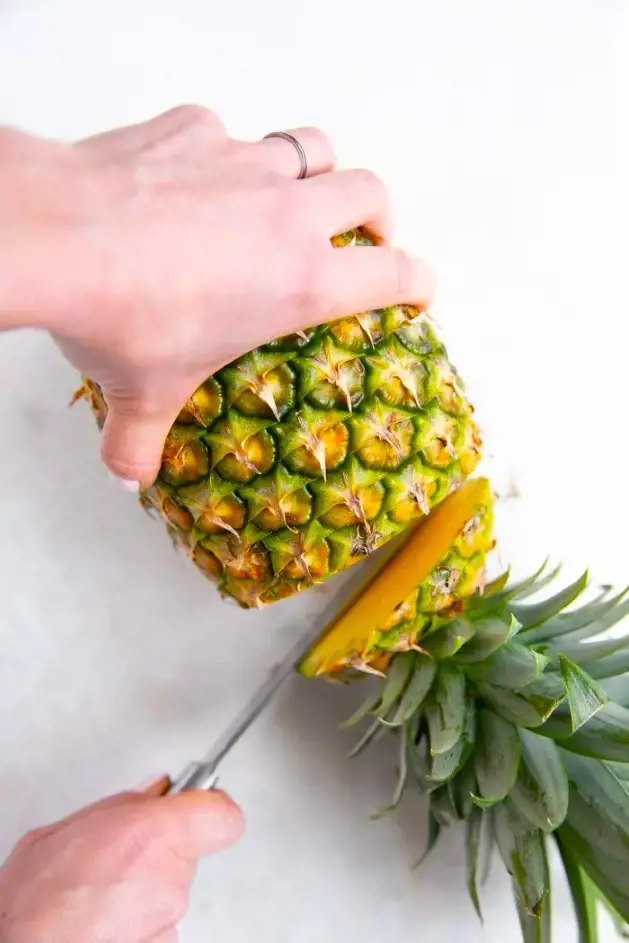
Carefully cut off the crown from the top of the pineapple, ensuring you leave about an inch of fruit attached to the base of the leaves.
Remove any excess fruit flesh from the base, as this can reduce the risk of rot. Here are some tips on removing the crown of pineapple, a summer fruit.
Tips:
- Use a sharp knife to ensure a clean cut when separating the crown from the fruit.
- Gently twist the crown while cutting to minimize damage to the stem.
Remove Lower Leaves
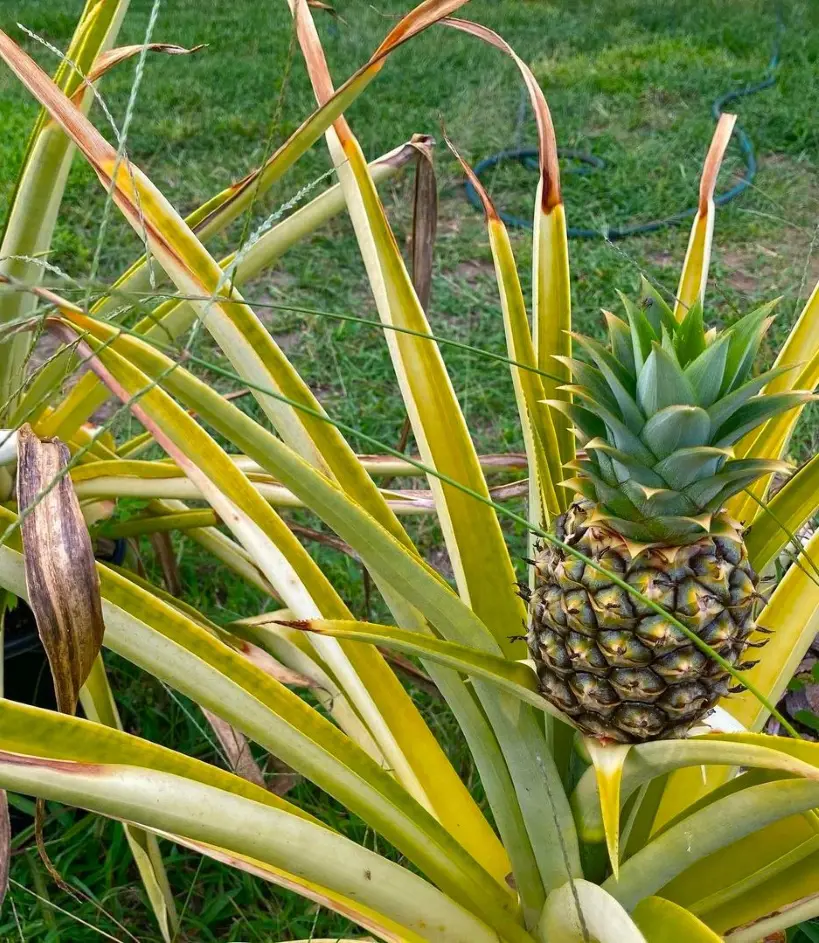
Removing the lower leaves of pineapple for planting is a crucial step to encourage successful root development and ensure a healthy start for the new plant.
Trim or gently twist off the lower leaves from the crown, exposing a bit of the stem. This step is crucial, as it helps the plant establish roots more easily when planted.
Tips:
- Remove only the bottom 1-2 layers of leaves to expose the stem, leaving as much surface area for rooting as possible.
- Trim any damaged or discolored leaves to promote a healthier start.
Allow Drying
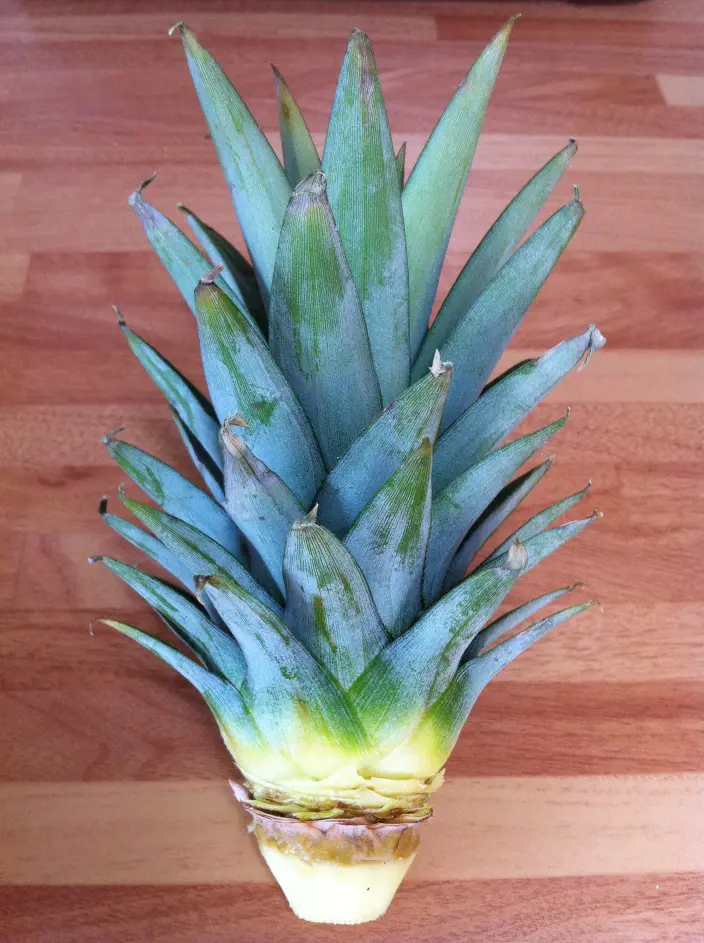
Pineapples, like many other plants, are susceptible to issues caused by excessive moisture. Drying the cut end for a day or two before planting reduces the risk of pathogens entering the wound during the planting process.
This step promotes a healthier start for the pineapple plant, increasing the chances of successful root development and overall growth.
Tips:
- Place the crown upside down during the drying period to allow any excess moisture to drain away from the cut end.
- Use a paper towel to pat the cut end if there's excess juice to speed up the drying process.
Rooting Medium
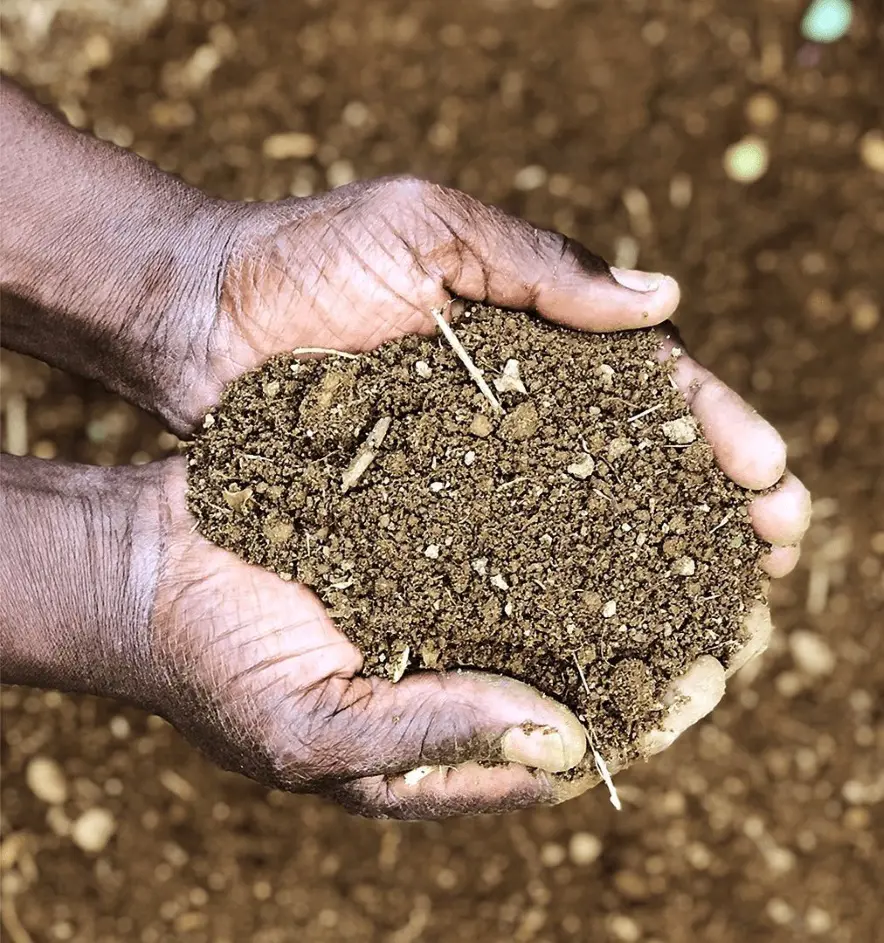
Pineapples prefer well-draining soil to prevent waterlogging, which can lead to root rot. A mix of potting soil with additives like perlite or sand ensures proper aeration and drainage, promoting healthy root development.
Additionally, the choice of rooting medium influences the availability of essential nutrients for the growing plant.
Tips:
- Mix in a tablespoon of cinnamon with the soil to act as a natural antifungal agent and promote root health.
- Consider adding a thin layer of small pebbles at the bottom of the pot for additional drainage.
Planting

Planting the pineapple crown at the correct depth in well-draining soil ensures that the roots receive adequate oxygen and nutrients. The proper planting depth helps stabilize the crown, allowing it to develop a strong root system.
This step also initiates the process of root development, which is essential for the plant's overall health and ability to absorb water and nutrients from the soil.
Tips:
- Create a small indentation in the soil before planting to accommodate the base of the crown securely.
- Water the soil with a very diluted solution of seaweed extract to provide essential micronutrients.
Provide Adequate Sunlight

Providing adequate sunlight is crucial for pineapple plants, as they are tropical plants that thrive in full sun. Pineapples require at least 6 to 8 hours of direct sunlight each day to promote healthy growth and eventually produce fruit.
Without sufficient sunlight, pineapple plants may become leggy, have stunted growth, and not produce fruit.
Tips:
- Rotate the pot occasionally to ensure all sides of the plant receive an equal amount of sunlight.
- Consider using a reflective surface, like a whiteboard, to redirect sunlight onto the plant.
Watering
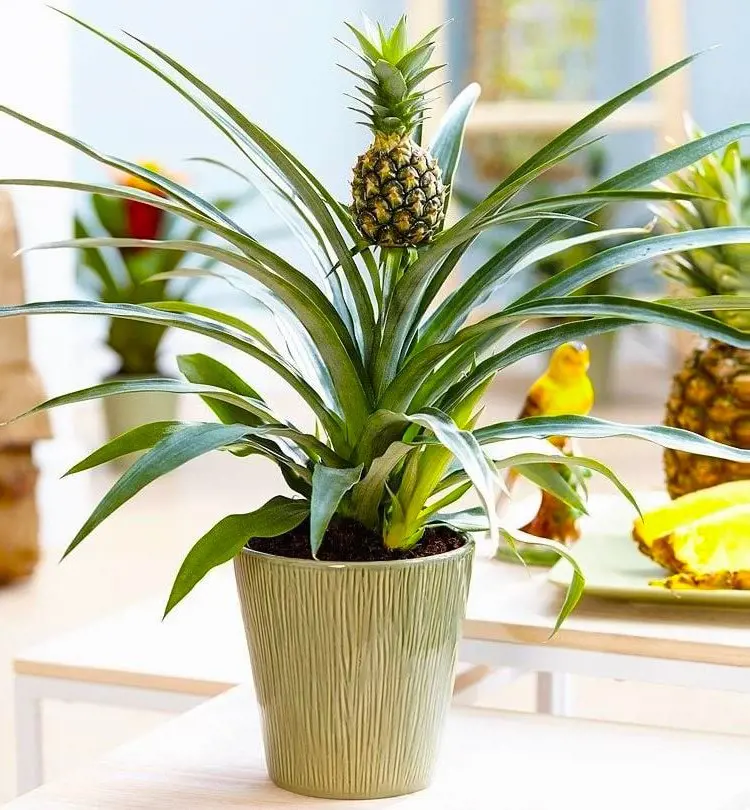
Adequate watering encourages the development of a robust root system, which is essential for nutrient absorption and overall plant health. While it's important to keep the soil consistently moist, avoiding waterlogged conditions is equally vital, as pineapples are susceptible to root rot in overly saturated soil.
During the initial phase, a balance must be maintained to support the pineapple's adaptation to its new environment.
Tips:
- Water the plant with rainwater or distilled water to avoid the buildup of salts from tap water.
- Mulch the surface of the soil to help retain moisture and regulate temperature.
Fertilize
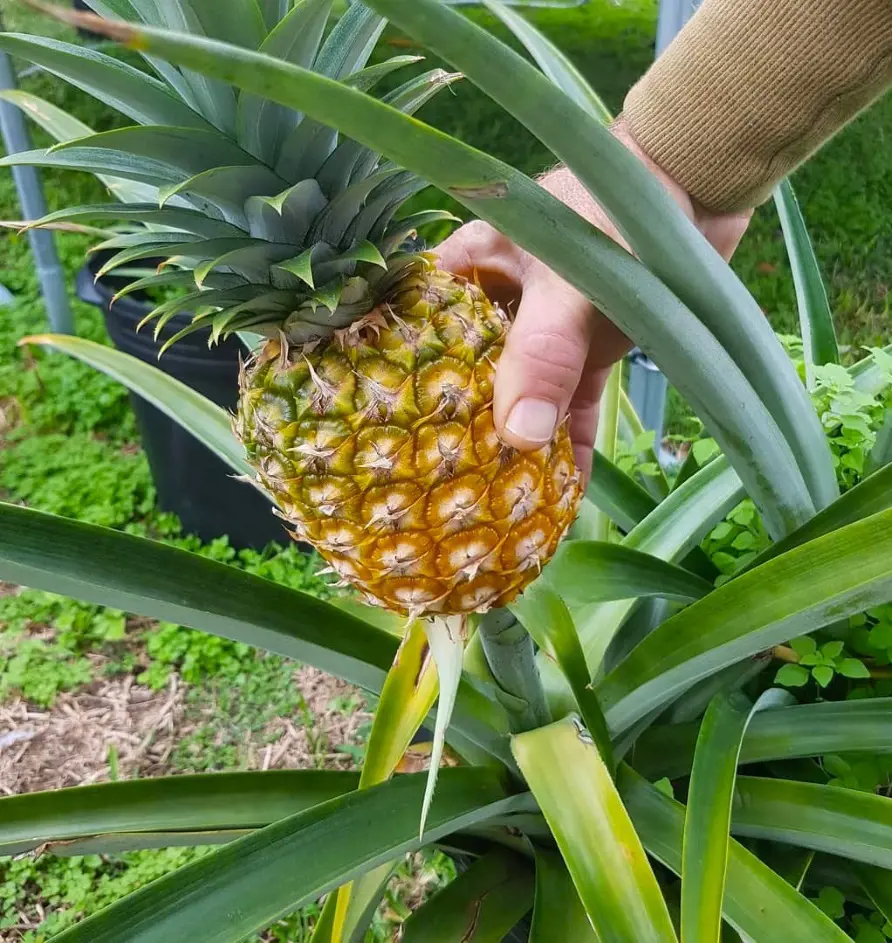
Pineapples are heavy feeders, requiring a balanced supply of nutrients such as nitrogen, phosphorus, and potassium. Fertilizing helps compensate for nutrient deficiencies in the soil, ensuring the plant has access to the elements necessary for healthy foliage, root development, and eventually the production of flavorful fruit.
Properly fertilized pineapple plants are more likely to yield larger, sweeter fruits, making this step instrumental in the successful cultivation of pineapples.
Tips:
- Incorporate crushed eggshells into the soil to provide a slow-release source of calcium.
- Dilute the fertilizer to half the recommended strength during the plant's first year of growth.
Transplanting
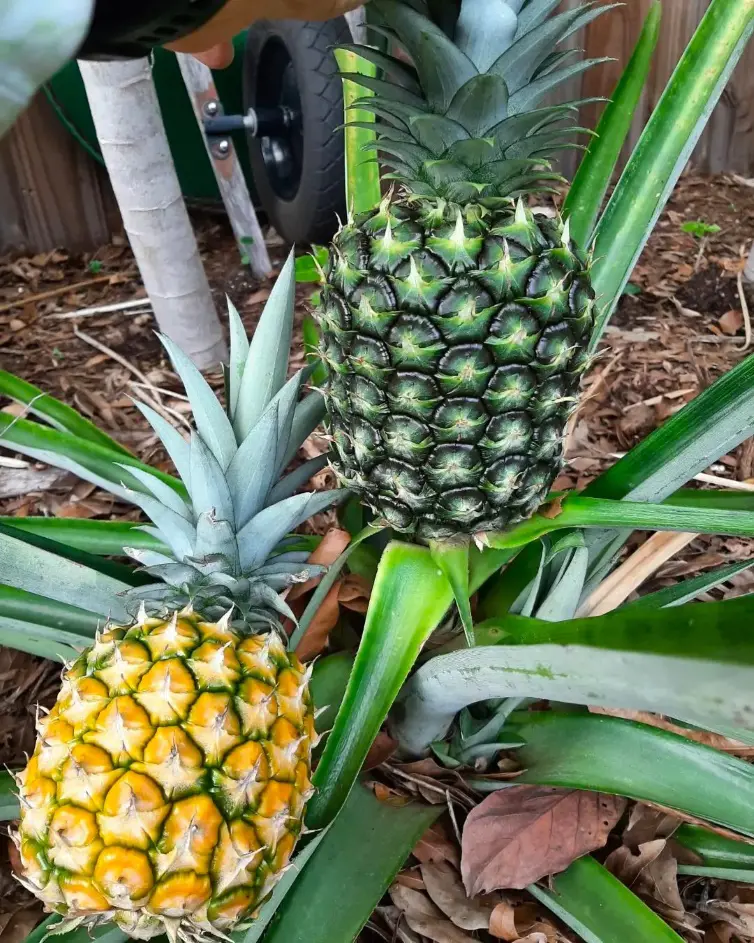
When a pineapple outgrows its initial pot, transplanting ensures it has enough space for root expansion and overall development. In a larger container or in the ground, the plant can access more nutrients and water, promoting healthier foliage and fruit production.
Transplanting is particularly important for pineapples, as it supports their long-term well-being and maximizes their chances of successfully growing and harvesting sweet, delicious fruit.
Tips:
- Transplant the pineapple into a larger container with a mix of cactus soil for improved drainage.
- Add a layer of crushed charcoal at the bottom of the new container to help absorb excess moisture.
How To Grow Pineapple From Seed?
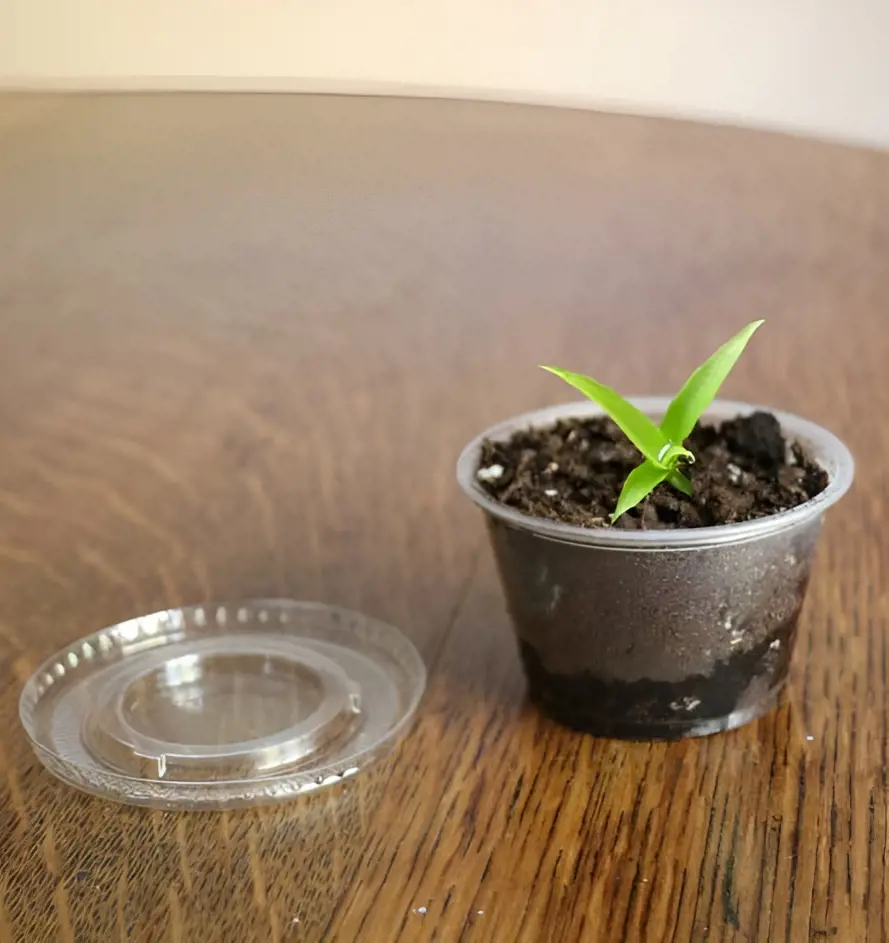
Growing your pineapple from seed is a more adventurous journey compared to the crown method. While slower and less predictable, it's a fascinating experience for the curious gardener. Here's how to embark on this seed-to-pineapple adventure:
- Harvest the seeds: Start by dissecting a ripe pineapple. Look for tiny black seeds embedded in the fleshy core, about three-eighths of an inch from the outer edge.
- Bath them: Rinse the seeds gently to remove any juicy bits. Then, soak them in warm water for a day or two to help them wake up.
- Soak and sprout: Wrap the seeds in a damp paper towel and seal them in a plastic bag. Keep it warm (70–75°F) and moist until sprouts appear (6–12 months!).
- Plant and nurture: Transfer the sprouts to individual pots with well-draining soil. Provide bright light, warmth, and consistent moisture.
- Patience is key: Growing pineapples from seed takes 3-5 years to fruit. Be patient, keep providing care, and soon you'll be enjoying your homegrown treasure.
Growing pineapple from seed is a marathon, not a sprint. Your pineapple seedling will take its time, growing a few inches each year. Just keep providing good care and sunshine, and eventually, after about 2-3 years, you might just see the beginnings of a spiky crown.
How Long To Grow a Pineapple?
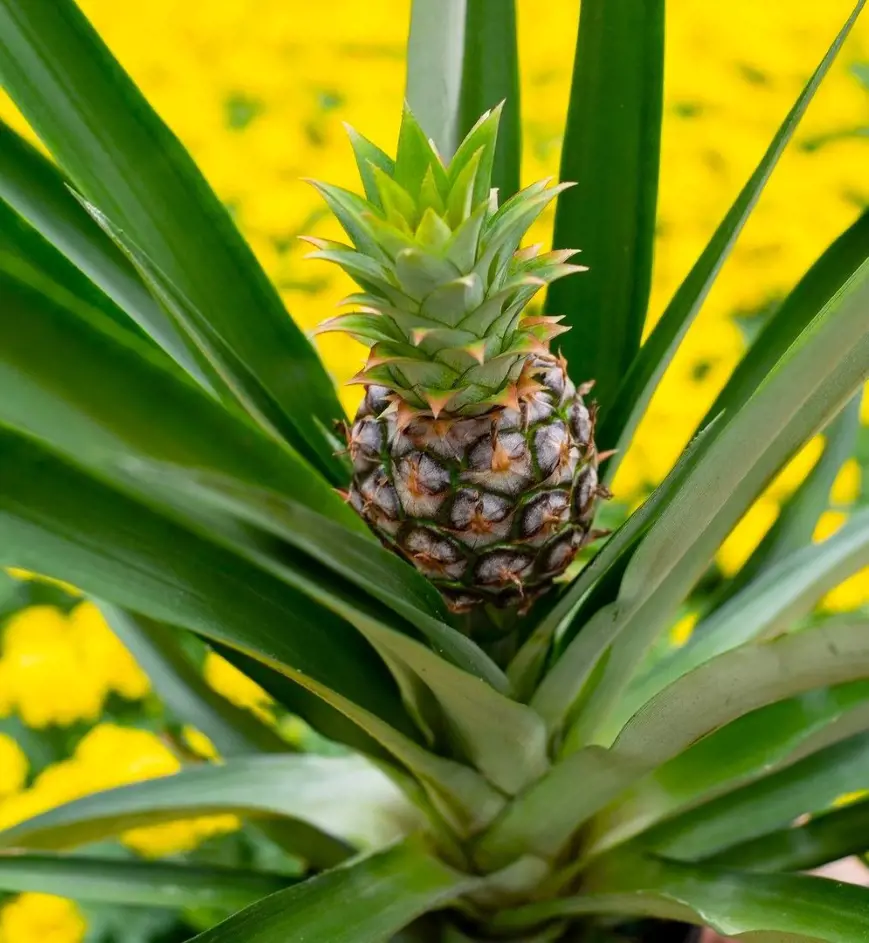
Growing your pineapple is pretty cool, but it's not like growing some lettuce that's ready in a week! It takes quite a bit of time and patience, but the wait is worth it. Here's the scoop on how long it takes:
- From sprout to fruit: It takes 18–24 months, or about 1.5–2 years, for your pineapple plant to bloom and actually grow a fruit.
- Flower power: After about a year and a half, your plant will put on a show with a beautiful crown of flowers.
- Growing big: Once the flowers fade, the baby pineapple starts to swell up. This takes another 6 months or so until it's fully ripe and ready to eat.
Some pineapples might grow a little faster or slower depending on things like how much sun they get, how much you water them, and even the type of pineapple it is. But no matter how long it takes, the sweet, juicy reward at the end is worth the wait.
Recent posts
How To Grow
How To Grow
How To Grow Garlic
A bulbous member of the onion family, garlic is prized for both its potent flavor and a variety of therapeutic applications. Due to its relative ease of cultivation, it is a favorite among home gardeners and a pioneer in kitchens worldwide. Garlic ma...
How To Grow
How To Plant and Grow Orchids
Orchids are one of the prettiest and most interesting flowers out there, with over 30,000 types and 200,000 hybrids. They are one of the biggest families of plants and can grow indoors or outdoors. However, growing and taking care of orchids is not e...
How To Grow
How To Plant, Grow And Harvest Corn All By Yourself
Growing your popcorn or sweet corn at home garden can seem like an interesting idea. However, it requires a large amount of space to grow as it is a tall plant that needs plenty of room to spread out. But, if you want to enjoy freshly popped po...
How To Grow
How To Plant, Grow And Care Cucumbers
Growing cucumbers is like going on a fun journey where you get to plant and pick your very own crunchy veggies. It's not just about having tasty cucumbers, it's also about the joy of seeing your plants grow. Whether you have a big garden or a small b...
How To Grow
How To Plant, Grow And Care Radishes In Your Garden
Growing radishes in your garden is a fantastic way to enjoy crisp and peppery veggies that you've nurtured from seed to plate. It's a straightforward process that anyone can try, even if you're new to gardening. In the following 12 steps, we'll guide...
How To Grow
How to Plant, Grow And Care For Spinach?
Growing leafy greens in your backyard garden is both healthy and fun. Spinach can be the best leafy green to start with as it is relatively easy to grow from scratch and can be harvested in about a month from planting. It thrives in spring or fall in...
